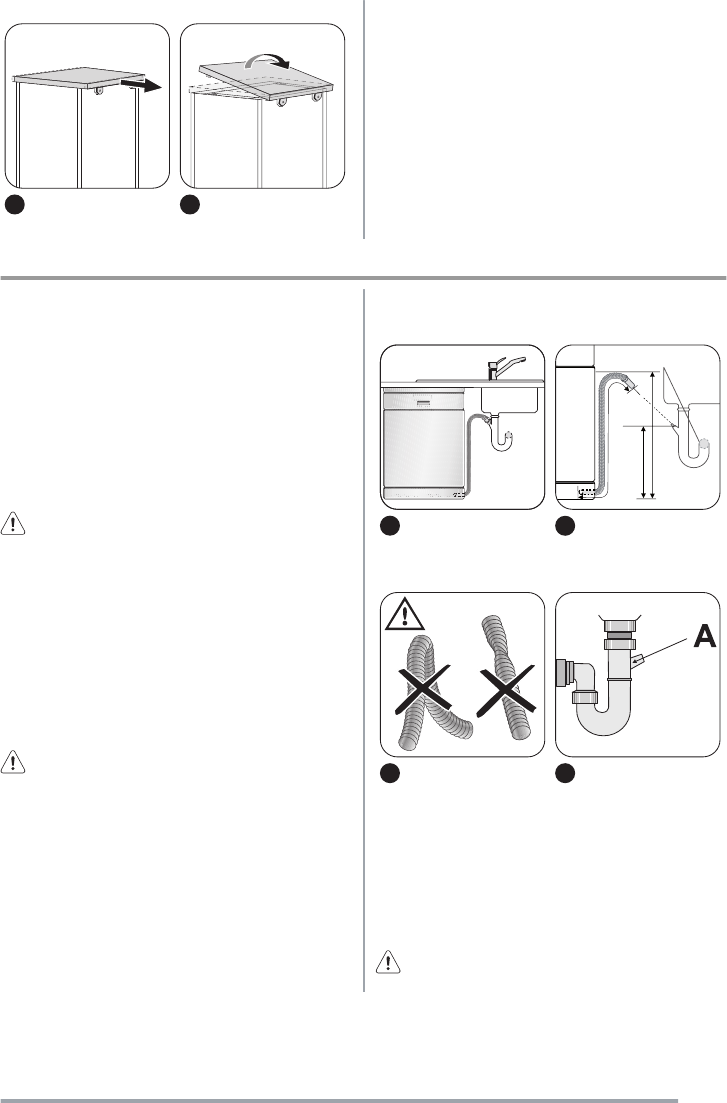
3
4
Install the appliance worktop to the appliance if you want
to use the dishwasher as a freestanding appliance.
The plinth on freestanding appliance is not adjustable.
Adjusting the level of the appliance
Make sure that the appliance is level to close and seal the
door correctly. If the level of the appliance is correct, the
door does not catch on the sides of the cabinet. If the door
does not close correctly, loosen or tighten the adjustable
feet until the appliance is level.
Water connection
Water inlet hose
Connected the appliance to a hot (max. 60°) or cold water
supply.
If the hot water comes from alternative sources of energy
that are more environmentally friendly (e.g. solar or pho-
tovoltaic panels and aeolian), use a hot water supply to
decrease energy consumption.
Connect the inlet hose to a water tap with an external
thread of 3/4”.
Caution! Do not use connection hoses from an old
appliance.
The water pressure must be in the limits (refer to the
chapter 'Technical data'). Make sure that the local water
authority gives you the average mains pressure in your
area.
Make sure that there are no kinks in the water inlet hose
and that the water inlet hose is not squashed or entangled.
Turn the inlet hose to the left or the right to suit the in-
stallation. Fit the locknut correctly to prevent water leaks.
Caution! Do not connect the appliance to new pipes
or pipes that are not used for a long time. Let the
water run for some minutes, then connect the inlet hose.
Drain hose
1
Connect the water drain
hose to the sink spigot.
max 85 cm
min 40 cm
max 400 cm
2
3
4
The internal diameter must not be smaller than the diam-
eter of the hose.
If you connect the water drain hose to a trap spigot under
the sink, remove the plastic membrane (A). If you do not
remove the membrane, remaining food can cause a block-
age in the drain hose spigot.
Caution! Make sure that the water couplings are
tight to prevent water leakage.
15


















